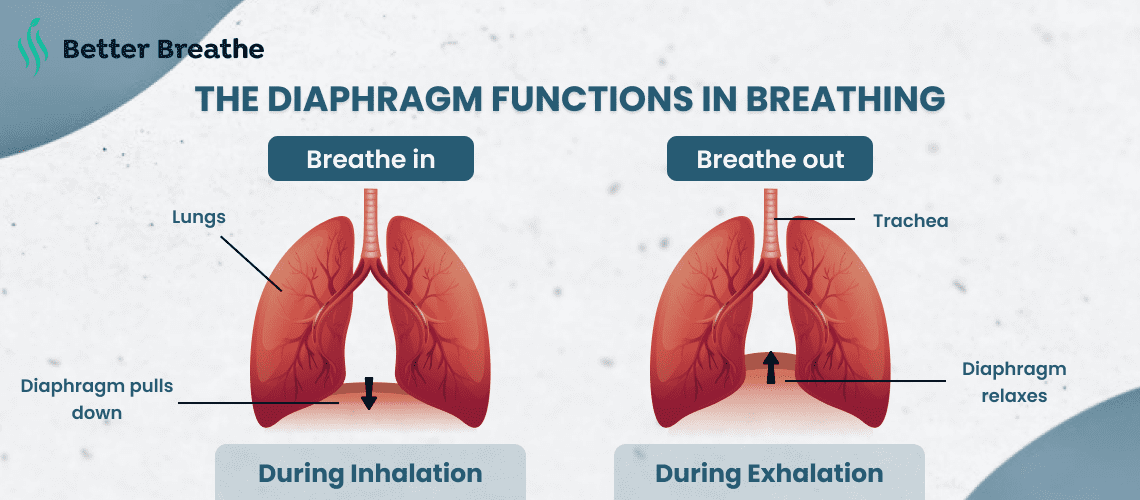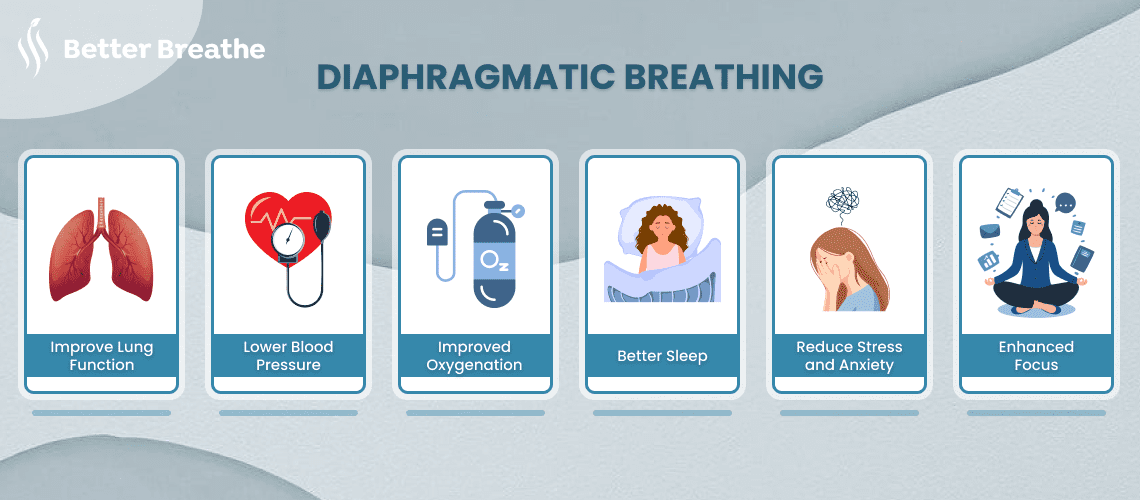
Taking a breath is a natural thing: you Breathe In, you Breathe Out. Nothing complicated about it is there? But is there a proper method to breathe? Guess what? There are correct and incorrect techniques to obtain oxygen into your system through your lungs. According to our research, 90% of people only breathe at 50% of their maximum capacity. This indicates that many of us are not getting enough oxygen and blood flow.
Breathing may appear simple, yet there is a strategy for effective breathing. The most generally used term is Belly Breathing, although in technical terms it is Diaphragmatic breathing. Diaphragm breathing is a type of breathing that has been around for centuries, but its popularity has grown significantly in recent years due to its Health Benefits. Diaphragm breathing is a powerful tool to improve both physical and mental well-being. With the right technique, research has shown that diaphragm breathing can reduce blood pressure, improve cardiovascular health, and even regulate Stress and Anxiety levels.
You don't think about it much while you're breathing. It's just a natural subconscious process. If you're experiencing trouble breathing, you're probably performing a rather common error. You can diagnose your Breathing Problems by first looking at your respiratory system and what keeps it running.

Three factors work together for you to draw breath: the lungs, the diaphragm, and the intercostal muscles. Let's examine how breathing works. When you inhale, your diaphragm contracts, lowering towards your abdomen allowing your lungs to expand and take in Oxygen. Because there is more space in the chest cavity.
When you Exhale, your diaphragm returns to its original position, forcing your lungs and chest cavity to contract and expel carbon dioxide. Shallow breathing indicates that you are not getting enough oxygen all the way down to the bottom of your lungs. Many of the microscopic blood arteries that carry oxygen to your cells are found here. In this case, Deep Breathing can help your heart rate to slow and stabilize your blood pressure.
Let's pause for a moment and take a deep breath. When you Inhale, does your shoulder rise and lengthen your body? As you exhale, your shoulders return to their original position, contracting your chest. If your answer is yes, you are doing it wrongly.
Vertical breathing is the name given to this form of breathing. You will feel as if you are truly opening your lungs, but you are simply getting to the top of them.
When you Breathe Properly, it is called belly breathing, which is also known as diaphragm breathing or Horizontal Breathing.
Basically, what you do is inhale using your belly. When you inhale air, your belly should come outwards, and you can feel your lungs opening up. In doing so, the oxygen will be drawn down into the bottom of your lungs. And when you exhale, your belly will come back in and your rib cage will contract. This is how your Diaphragm Muscle makes sure you get the optimal amount of air.

Breathing is a subconscious process, you might be wondering how it can be incorrect. You must be wondering how this happened after learning this. What caused it to start breathing incorrectly? It is something that your body accomplishes on its own. Let us discuss some of the possible causes of improper breathing.
Everything is fast-paced in our generation. So does our life at a fast pace. We forget to slow down our pace or steady ourselves. The stress level is always up. The stress leads to taking shorter breaths.
From childhood to your retirement you sit at a desk. All this sitting leads you towards a slouching posture in your chair. This slouching posture collapses your rib cage little by little. Because of this, your lungs can’t fill up all the way when you inhale.
It is commonly defined as having too much body fat. It means when you have more mass in your body, more tissue pushing on your chest and diaphragm. It makes it more difficult for the lungs to fill while breathing. So you are breathing shorter breaths than you need.
Whatever the cause of your Breathing Pattern, you can follow simple exercises that can help you get back to proper breathing practices.
In this exercise, you’ll have to sit down and relax your shoulders and neck. Slowly inhale through your nose for two seconds. Count till two, then purse your lips like you are going to whistle and slowly exhale for four seconds. Repeat this step over and over again. This slow and controlled method will help you relax and see how a correct breath should feel
Lay on the ground and place a few lite books on your stomach. If you don’t prefer books you can put your hands on your stomach instead. Take a slow, deep breath through your nose, you can feel your stomach push books/hands upwards. Now exhale through your mouth taking about twice as long as you took to inhale. Repeat this Breathing Exercise for five to ten minutes. While practicing this exercise if you feel your hands or books are not rising when you inhale, that will be your cue to remember to do your belly breathing instead of vertical breathing.
These breathing techniques will train your body to breathe properly again. Little by little, day by day you can turn your breathing habits into the right ones. Take it slow and focus on your breathing. You will start experiencing diaphragmatic breathing soon. Otherwise, you can join our app " BetterBreathe " and learn to breathe properly again. Alternatively, you can join our app "BetterBreathe" to learn proper breathing techniques. Available for download on the Play Store and App Store, BetterBreathe offers premium features to support your journey. The level of stress you are experiencing decreases when you find that you have an increased level of energy. There has been an increase in your ability to concentrate. Moreover, your headaches and neck pain have disappeared, as well as your mood. In that case, you will know it has worked